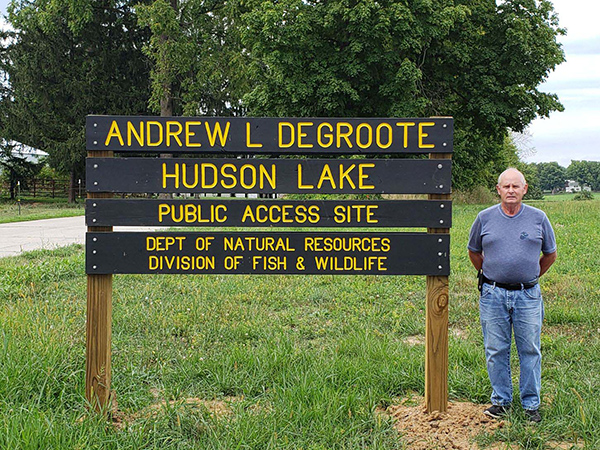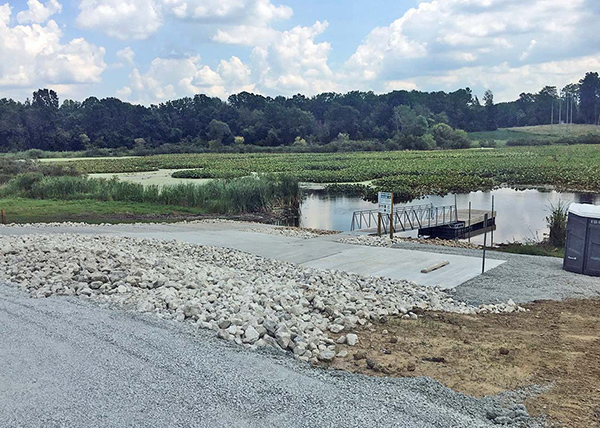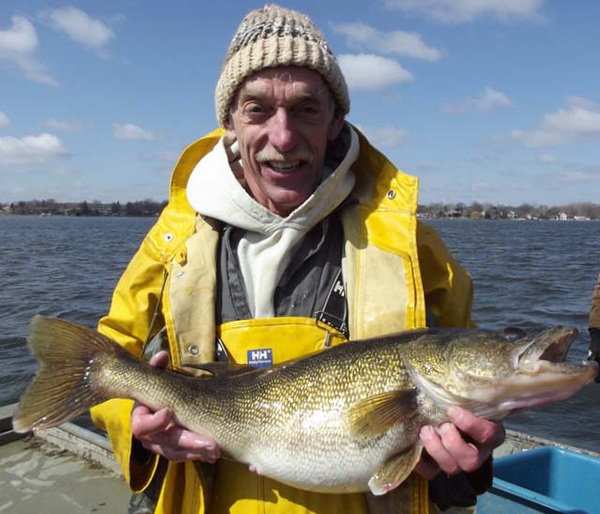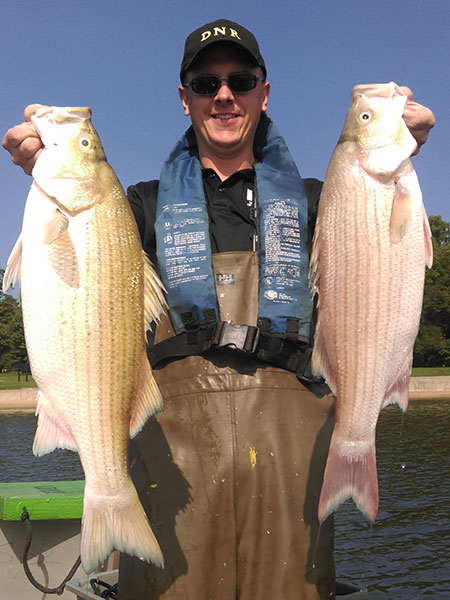- Details
By Louie Stout
 Jack DeGroote Gives Back with Hudson Access
Jack DeGroote Gives Back with Hudson Access
Indiana needs more people like Jack DeGroote.
If the state had more folks like this generous man, we’d have a lot more public access on northern Indiana lakes.
You see, the 75-year old Eagle Global Logistics retiree probably could have made some money on the one acre land parcel he gifted to the Indiana DNR for the new Hudson Lake public access.
But he didn’t. He chose to donate the land that recently became the Andrew L. DeGroote public access site.
“God gave us a reason to do it by blessing my family use of the lake over the years and this was our opportunity to give something back,” said the modest Hudson Lake, Ind. man.
In addition, it gave him the opportunity to honor his brother Andrew who died in a hunting accident in 1945, just two years after Jack was born.
Andrew was hunting alone about a mile from home, when, according stories told to Jack, he stuck his gun through a fence and the wire caught the hammer. It discharged into his shoulder.
- Details
By Louie Stout
 New Hudson Lake Access Opens
New Hudson Lake Access Opens
You can now launch your boat at the new public boat launch on Hudson Lake in LaPorte County.
The DNR completed construction of the new access and it is now open for public use. Prior to the construction work that began in July, Hudson was Indiana’s largest natural lake without a DNR public access.
- Details
By Louie Stout
 Retiring Indiana Biologist Jed Pearson Put Anglers First
Retiring Indiana Biologist Jed Pearson Put Anglers First
Indiana anglers lost a valuable ally last week when District Biologist Jed Pearson called it quits.
Pearson spent 49 years working for the Indiana DNR and 44 of those as a northern Indiana fisheries biologist.
The 68-year-old fish management veteran has been instrumental in several northern Indiana fish successes, none the least of which has been improved bass fisheries and the development of the successful muskie program in Kosciusko County.
However, of all of his accomplishments – of which there were many - he lists his participation in acquiring more than a dozen public access sites on northern Indiana waters as his proudest.
“I always felt that was a priority,” said Pearson. “It was frustrating that we never had the money to go buy land so I was out begging for donations. I never understood why Indiana could have money to build access sites, but couldn’t come up with the money to buy the land. In my eyes, providing public access was one of the most important things we could do as a fisheries agency. It is permanent and not something that is here today and gone tomorrow.”
- Details
By Louie Stout
 Potato Creek ‘Wipers’ Deserve More Attention from Michiana Anglers
Potato Creek ‘Wipers’ Deserve More Attention from Michiana Anglers
Unless you’ve had a rod ripped into the water while fishing off the bank or had something destroy your crappie rig, you may not know there’s a pretty cool – and big - fish swimming at Worster Lake.
The hybrid striped bass – also known as a wiper – has been stocked in the Potato Creek State Park for eight years but darn few anglers fish for them.
A few of the fish get caught, but usually by unsuspecting anglers targeting other fish. When you hook a big one, you’ll know it; they are aggressive biters, hard-pullers and make good table fare when grilled, broiled or baked.


